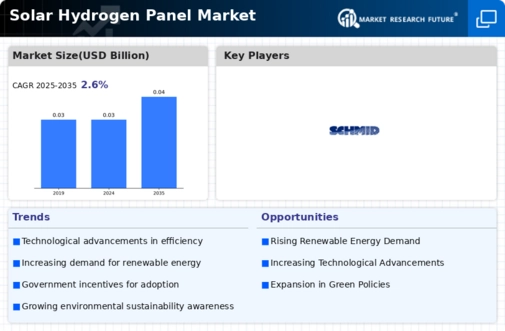Solar Hydrogen Panel Size
Solar Hydrogen Panel Market Growth Projections and Opportunities
The market dynamics of Solar Hydrogen Panel sector have witnessed significant shifts arising from technological inputs, global interests in renewable energy sources and environmental concerns. Solar hydrogen panels are one of the most promising players in the renewable energy landscape as the world recognizes the need to transition towards sustainable energy solutions.
One key driver of this market is a persistent focus on environment sustainability. As fears over climate change heighten, governments, corporations and consumers are actively seeking cleaner greener alternatives for energy. Among other things, solar hydrogen panels offer a dual-benefit of harnessing solar electricity to produce hydrogen through electrolysis. This results not only in green power, but also produces hydrogen- an adaptable clean fuel that can be used in many industries including transportation and manufacturing.
However, Technology advancements make up another aspect which has major impacts on these dynamics. There is ongoing research aimed at improving efficiency and lowering costs related with solar hydrogen panel production. When such improvements occur then they become more attractive for investors as well as end users. In addition, changing technology landscapes create windows for innovation which may lead to breakthroughs that could enhance market growth even further.
Another critical issue regarding market dynamics relates to government policies and incentives. A lot of countries have been putting into place supportive measures while offering financial aid towards promotion of renewable energies like solar hydrogen panels. Subsidies are just a few examples among other financial incentives which can be given by governments; this is done so as to encourage companies or individuals to invest in these long term solutions that will save our planet earth .Thus enabling suitable environment for SHP’s expansion.
Market dynamics are driven by global collaboration and partnerships too. The field of renewable energy is witnessing increasing cooperation between governments, research institutions and private firms in order to hasten the development and deployment of SHPs globally .This kind of partnerships allow knowledge sharing , resource pooling , establishing global network targeting common challenges confronting this industry with intent of advancing it together .







Leave a Comment